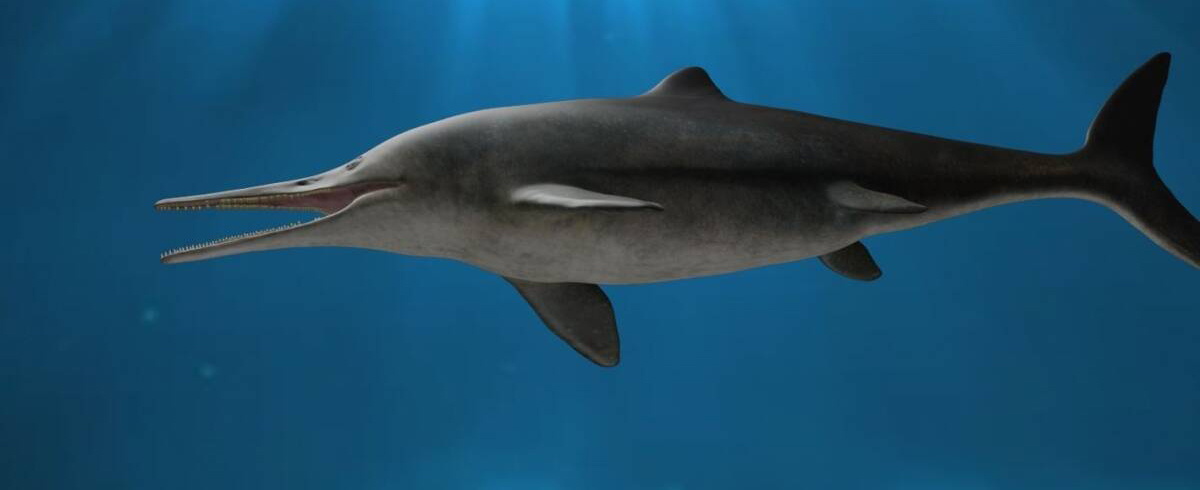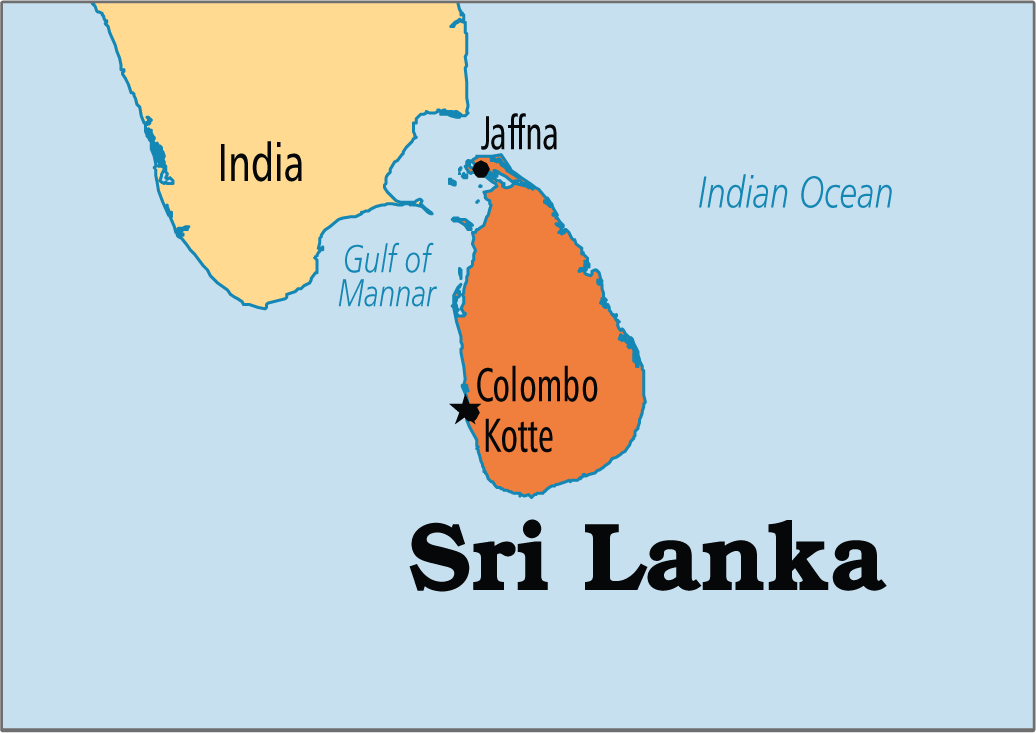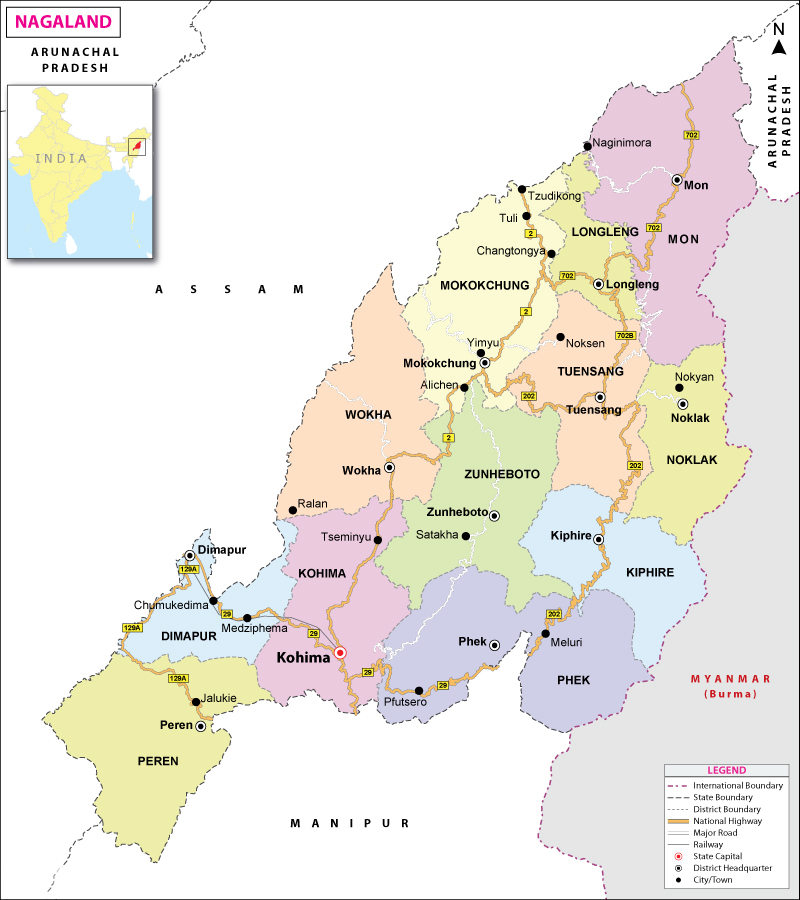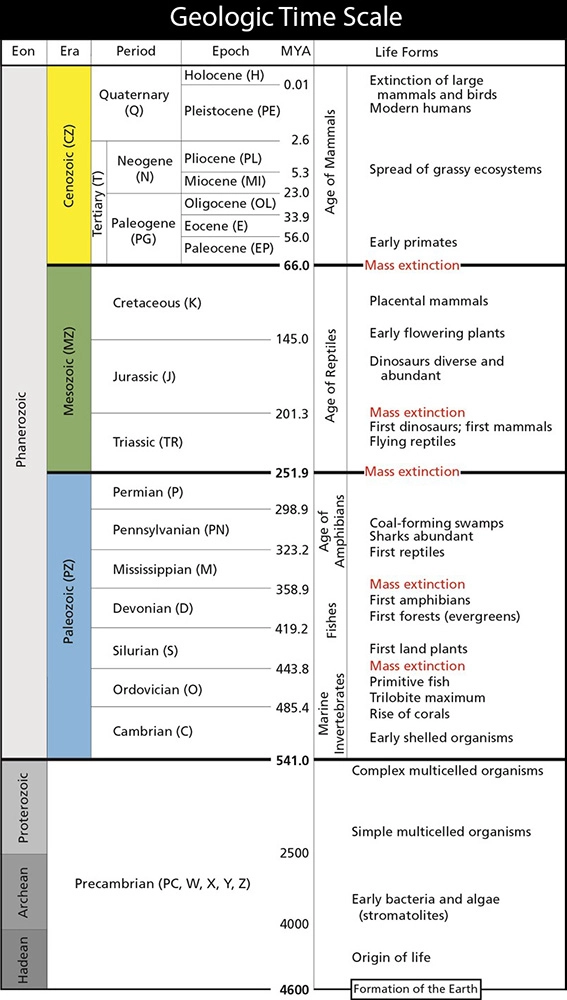International Relations
Four Pronged Strategy on Srilanka Crisis
Why in News
Recently, India and Sri Lanka agreed to a four-pronged approach to discuss initiatives on food and energy security to help mitigate Sri Lanka’s economic crisis.
- Earlier this year, Sri Lanka declared an economic emergency amid rising food prices, a depreciating currency, and rapidly depleting forex reserves.
Key Points
- Four-Pillar Initiative Comprises:
- Lines of credit: Lines of credit for food, medicines and fuel purchases granted by India.
- Lines of credit is a credit facility extended by a bank or any other financial institution to a government, business or an individual customer, that enables the customer to draw the maximum loan amount.
- Currency Swap: A currency swap agreement to deal with Sri Lanka's balance of payment issues.
- The word swap means exchange. A currency swap between the two countries is an agreement or contract to exchange currencies with predetermined terms and conditions.
- Modernisation Project: An early modernisation project of the Trinco oil farms that India has been pursuing for several years.
- The Trincomalee Harbour, one of the deepest natural harbours in the world, was developed by the British during World War II.
- In particular, the projects to develop oil infrastructure in Trincomalee have been hanging fire since 2017.
- Indian Investments: A Sri Lankan commitment to facilitate Indian investments in various sectors.
- Lines of credit: Lines of credit for food, medicines and fuel purchases granted by India.
- Recent Issues in India-Sri Lanka Relations:
- Killing of Fisherman:
- Killing of Indian fishermen by the Sri Lankan Navy is a lingering issue between these two nations.
- In 2019 and 2020, a total of 284 Indian fishermen were arrested and a total of 53 Indian boats were confiscated by the Sri Lankan authorities.
- Killing of Indian fishermen by the Sri Lankan Navy is a lingering issue between these two nations.
- East Coast Terminal project:
- This year (2021) Sri Lanka cancelled an MoU signed with India and Japan for the East Coast Terminal project.
- India protested the cancellation though it later agreed to the West Coast Terminal being developed by the Adani group.
- This year (2021) Sri Lanka cancelled an MoU signed with India and Japan for the East Coast Terminal project.
- Influence of China:
- China’s rapidly growing economic footprint (and political clout as a corollary) in Sri Lanka is straining India-Sri Lanka relations.
- China is already the largest investor in Sri Lanka, accounting for 23.6% of the total Foreign Direct Investment (FDI) during 2010-2019 as against 10.4% from India.
- China is also one of the largest export destinations for Sri Lankan goods and holds over 10% of its external debt.
- China’s rapidly growing economic footprint (and political clout as a corollary) in Sri Lanka is straining India-Sri Lanka relations.
- 13th Amendment of the Sri Lankan Constitution:
- It envisages devolution of necessary powers to the provincial councils to address the just demand of the Tamil people for equality, justice, peace, and respect within a united Sri Lanka.
- Killing of Fisherman:
India - Sri Lanka Relations
- Background: India-Sri Lanka relationship is more than 2,500 years old and both sides have built upon a legacy of intellectual, cultural, religious and linguistic intercourse.
- Support Against Terrorism: During the course of the civil war, India supported the right of the Government of Sri Lanka to act against terrorist forces.
- Support For Rehabilitation: The Indian Housing Project is Government of India’s flagship project of developmental assistance to Sri Lanka. Its initial commitment is to build 50,000 houses for those affected by the civil war as well as for the estate workers in the plantation areas.
- Assistance during Covid-19: The Reserve Bank of India (RBI) had signed an agreement for extending a USD 400 million currency swap facility to Sri Lanka to boost the foreign reserves and ensure financial stability of the country, which was badly hit by Covid 19 pandemic. Recently, India has also supplied Covid-19 Vaccines to Sri Lanka.
- Joint Exercises: India and Sri Lanka conduct joint Military (Mitra Shakti) and Naval exercise (SLINEX).
- Participation in Groupings: Sri Lanka is also a member of groupings like BIMSTEC (Bay of Bengal Initiative for Multi-Sectoral Technical and Economic Cooperation) and SAARC in which India plays a leading role.
Way Forward
- A subterranean trust deficit exists between India and Sri Lanka yet neither Sri Lanka nor India can afford to have strained ties.
- However, as a much larger country, the onus is on India to carry Sri Lanka along. India needs to be extremely patient and avoid reacting to any pinpricks and engage Sri Lanka even more regularly and closely, especially at the highest levels.
- There is a need to step up our people-centric developmental activities while scrupulously staying clear of any interference in Colombo’s domestic affairs.
- Nurturing the Neighbourhood First policy with Sri Lanka is important for India to preserve its strategic interests in the Indian Ocean region.


Indian History
Paika Rebellion: 1817
Why in News
Recently, the Centre has said that the Paika rebellion cannot be called the first War of Independence.
- It has also been suggested that it would be included as a case study in the Class 8 National Council of Educational Research and Training (NCERT) history textbook.
- For the first time in 2017, the Odisha state cabinet had passed a proposal to formally urge the centre to declare the Paika rebellion as the first war of Independence.
- In 2018 the Government released the commemorative coin and postage stamp in memory of Paika Rebellion.
Key Points
- About:
- The Paikas (pronounced “paiko”, literally ‘foot soldiers’), were a class of military retainers had been recruited since the 16th century by kings in Odisha from a variety of social groups to render martial services in return for hereditary rent-free land (nish-kar jagirs) and titles.
- When the British arrived they were peasant militias of the Gajapati ruler Mukund Dev II, of Odisha.
- British Oppression:
- The Paikas lost their estates when the new colonial establishments and land revenue settlements of the British came into force.
- Establishment of British rule in Odisha was followed by a policy of repression against the Paikas. They lost their traditional position in the society and their lands were taken away.
- The continuous interference in the economy and revenue systems led to exploitation and oppression of the peasants and farmers eventually triggering a rebellion against the British.
- Before and after the revolt of the Paikas in Khurda came risings in Paralakhemundi (1799-1814), Ghumusar (1835-36) and Angul (1846-47), the rebellion of Kondhs in Kalahandi (1855), and the Sabara Rebellion of 1856-57, again in Paralakhemundi.
- These rebellions were led by propertied sections whose position was undermined by colonial interventions
- The Paikas lost their estates when the new colonial establishments and land revenue settlements of the British came into force.
- Paika Rebellion\Revolt:
- The Paika Bidroha (Paika Rebellion) of 1817 took place nearly 40 years before the first sepoy mutiny.
- Bakshi Jagabandhu Bidyadhar Mohapatra Bharamarbar Rai, the highest-ranking military general of Mukund Dev II, and erstwhile holder of the lucrative Rodanga estate, led an army of Paikas to join the uprising of the Kondhs.They confronted the British on 2nd April 1817.
- The Paikas were supported by the rajas, zamindars, village heads and ordinary peasants. The rebellion quickly spread to different parts of the province.
- Government buildings in Banapur were set on fire, policemen killed and the British treasury looted.
- Over the next few months, the revolt continued but was eventually overpowered by the British army. Bidyadhar was imprisoned in 1825 and died while still in jail four years later.
Biodiversity & Environment
Perform, Achieve and Trade Scheme
Why in News
A recent report released by the Centre for Science and Environment (CSE) mentions that the Perform, Achieve and Trade (PAT) scheme introduced in 2008 is not effective.
- The PAT scheme was introduced to improve energy efficiency in Indian industries and consequently reduce greenhouse gas.
- The report attributed the inefficiency of the scheme to non-transparency, unfastened targets and neglected deadlines.
Centre for Science and Environment (CSE)
- CSE is a public interest research and advocacy organisation based in New Delhi.
- It researches into, lobbies for and communicates the urgency of development that is both sustainable and equitable.
Key Points
- About:
- It is a market-based mechanism to further accelerate as well as incentivize energy efficiency in the large energy-intensive industries.
- The Energy Savings Certificates (ESCerts) were introduced in India in 2011 under the PAT by the Bureau of Energy Efficiency (BEE) under the National Mission of Energy Efficiency.
- NMEEE is one of the eight national missions under the National Action Plan on Climate Change (NAPCC) launched by the Government of India in the year 2008.
- Energy Savings Certificates (ESCerts):
- This market- based mechanism is facilitated through the trading of Energy Savings Certificates (ESCerts) which are issued to those plants who have overachieved their targets.
- The underachievers are entitled to purchase ESCerts through two power exchanges - Indian Energy Exchange (IEX) and Power Exchange India Limited (PXIL).
- Industries that take part in this scheme are referred to as designated shoppers (DC).
- Sectors Covered:
- PAT covered about 13 energy-intensive sectors: Thermal power plants (TPP), cement, aluminium, iron and steel, pulp and paper, fertiliser, chlor-alkali, petroleum refineries, petrochemicals, distribution companies, railways, textile and commercial buildings (hotels and airports).
- Other initiatives to Promote Energy Conservation and Energy Efficiency:
Way Forward
The energy reduction target should be made stringent in order to meet up with the global climate commitments with respect to greenhouse gas emission mitigation.


Indian Economy
PM MITRA Parks
Why in News
Recently, the Government has approved setting up of 7 PM Mega Integrated Textile Region and Apparel (PM MITRA) Parks in Greenfield/Brownfield sites with an outlay of Rs. 4445 cr for a period of seven years upto 2027-28.
- Government of India is implementing the Scheme for Integrated Textile Park (SITP) which provides support for creation of world-class infrastructure facilities for setting up of textile units.
Key Points
- About:
- It park will be developed by a Special Purpose Vehicle which will be owned by the Central and State Government and in a Public Private Partnership (PPP) Mode.
- Each Park will have an incubation centre, common processing house and a common effluent treatment plant and other textile related facilities such as design centres and testing centres.
- Incubation centre is the institution that assists entrepreneurs in developing their business and solving problems associated with it, especially in the initial stages, by providing an array of business and technical services, initial seed funds, lab facilities, advisory, network and linkages.
- The Master Developer will not only develop the Industrial Park but also maintain it during the concession period.
- Funding:
- The centre will provide development capital support for the development of common infrastructure of Rs 500 crore for each greenfield MITRA park and upto Rs 200 crore for each brownfield park.
- Greenfield describes a completely new project that has to be executed from scratch, while a brownfield project is one that has been worked on by others.
- The centre will provide development capital support for the development of common infrastructure of Rs 500 crore for each greenfield MITRA park and upto Rs 200 crore for each brownfield park.
- Eligibility for Incentives:
- An additional Rs 300 crore will be provided as Competitiveness Incentive Support for the early establishment of textiles manufacturing units in each of these parks.
- Investors who set up “anchor plants” that employ at least 100 people will be eligible for incentives of upto Rs 10 crore every year for upto three years.
- Significance:
- Reduce Logistics Cost:
- It will reduce logistics cost and strengthen the value chain of the textile sector to make it globally competitive.
- High logistics costs are considered a key hurdle to India’s goal of boosting textile exports.
- Employment Generation:
- Each park is expected to directly generate 1 lakh jobs and indirectly generate a further 2 lakh jobs.
- Attract FDI:
- The parks are crucial to attract Foreign Direct Investment (FDI).
- From April 2000 to September 2020, India’s textile sector received Rs 20,468.62 crore of FDI, which is just 0.69% of the total FDI inflows during the period.
- Reduce Logistics Cost:
- Other Related Initiatives:
- The Production Linked Incentive Scheme for man-made fibre segment (MMF) apparel, MMF fabrics and ten products of technical textiles for five years has been approved.
- A National Technical Textiles Mission has already been launched to promote research and development in that sector.
India’s Textile Sector
- About:
- It is one of the oldest industries in the Indian economy, and is a storehouse and carrier of traditional skills, heritage and culture.
- It contributes 2.3% to Indian Gross Domestic Product, 7% of Industrial Output, 12% to the export earnings of India and employs more than 21% of total employment.
- India is the 6th largest producer of Technical Textiles with 6% Global Share, largest producer of cotton & jute in the world.
- Technical textiles are functional fabrics that have applications across various industries including automobiles, civil engineering and construction, agriculture, healthcare, industrial safety, personal protection etc.
- India is also the second largest producer of silk in the world and 95% of the world’s hand woven fabric comes from India.
- Major Initiatives:
- Amended Technology Upgradation Fund Scheme (ATUFS)
- Scheme for Integrated Textile Parks (SITP)
- SAMARTH Scheme.
- North East Region Textile Promotion Scheme (NERTPS)
- Power-Tex India
- Silk Samagra Scheme
- Jute ICARE
Indian Polity
Nagaland Statehood Day
Why in News
Recently, Nagaland has celebrated its 59th Statehood day on December 1st 2021.
- Nagaland was formally recognised as a separate state on 1st December, 1963, with Kohima being declared as its capital.
- The State of Nagaland Act, 1962, was enacted by the Parliament to give Nagaland statehood.
Nagaland
- Historical Background:
- After India became independent in 1947, the Naga territory initially remained a part of Assam. However, a strong nationalist movement began seeking a political union of the Naga tribes, and extremists demanded outright secession from the Indian union.
- In 1957, the Naga Hills region of Assam and the Tuensang frontier division to the northeast were brought together under a single unit directly administered by the Indian government.
- In 1960 it was resolved that Nagaland should become a constituent state of the Indian union. Nagaland achieved statehood in 1963, and a democratically elected government took office in 1964.
- Geography:
- It is bounded by the Indian states of Arunachal Pradesh to the northeast, Manipur to the south, and Assam to the west and northwest and the country of Myanmar (Burma) to the east. The state capital is Kohima, located in the southern part of Nagaland.
- Nagaland has a Monsoonal (wet-dry) Climate. Annual rainfall averages between 70 and 100 inches and is concentrated in the months of the southwest monsoon (May to September).
- Biodiversity:
- Flora: Forests cover about one-sixth of Nagaland. Below 4,000 feet are tropical and subtropical evergreen forests, containing palms, rattan, and bamboo, as well as valuable timber species. Coniferous forests are found at higher elevations. Areas cleared for jhum (shifting cultivation) have a secondary growth of high grass, reeds, and scrub jungle
- Fauna: Elephants, tigers, leopards, bears, several kinds of monkeys, sambar deer, buffalo, wild oxen, and the occasional rhinoceros live in the lower hills. Porcupines, pangolins (scaly anteaters), wild dogs, foxes, civet cats, and mongooses also are found in the state.
- Mithun (Gayal) is the state animal of Nagaland and Arunachal Pradesh.
- Blyth's tragopan is the state bird of Nagaland.
- Tribes:
- The Konyaks are the largest tribe, followed by the Aos, Tangkhuls, Semas, and Angamis.
- Other tribes include the Lothas, Sangtams, Phoms, Changs, Khiem Hungama, Yimchunger, Zeliangs, Chakhesangs (Chokri), and Rengmas.
- Economy:
- Agriculture employs about nine-tenths of the population. Rice, corn (maize), small millets, pulses (legumes), oilseeds, fibres, sugarcane, potato, and tobacco are the principal crops.
- Nagaland, however, still has to depend on imports of food from neighbouring states.
- Protected Areas in Nagaland:
- Intanki National Park
- Singphan Wildlife Sanctuary
- Puliebadze Wildlife Sanctuary
- Fakim Wildlife Sanctuary
- Major Festival:
- The Hornbill Festival is a celebration held every year from 1 to 10 December, in Nagaland.
- The significance of the festival lies in the fact that it is not an ancient festival, and it was started in the year 2000 to popularise Nagaland among the tourists.
Nagas
- Nagas are a hill people who are estimated to number about 2.5 million (1.8 million in Nagaland, 0.6 million in Manipur and 0.1 million in Arunachal states) and living in the remote and mountainous country between the Indian state of Assam and Burma.
- There are also Naga groups in Burma.
- The Nagas are not a single tribe, but an ethnic community that comprises several tribes who live in the state of Nagaland and its neighbourhood. Nagas belong to the Indo-Mongoloid Family.
- There are nineteen major Naga tribes, namely, Aos, Angamis, Changs, Chakesang, Kabuis, Kacharis, Khain-Mangas, Konyaks, Kukis, Lothas (Lothas), Maos, Mikirs, Phoms, Rengmas, Sangtams, Semas, Tankhuls, Yamchumgar and Zeeliang.


Important Facts For Prelims
Worldwide Cost of Living Report
Why in News
Recently, the Worldwide Cost of Living report has been released highlighting that Tel Aviv (Israel's capital) is the world’s most expensive city to live in. .
- The report is compiled by the Economist Intelligence Unit (EIU). It compares the cost of living indices in different cities.
Key Points
- Most Expensive City: The Israeli city of Tel Aviv topped the rankings for the first time, overtaking last year's leader Paris, which is now at second place along with Singapore.
- Paris and Singapore came joint second, followed by Zurich and Hong Kong. New York was in sixth, with Geneva in seventh.
- Report Methodology: The index is benchmarked against prices in New York City, hence cities with currencies that are stronger against the US dollar are likely to appear higher in the rankings.
- Scope of the Result: The 2021 Worldwide Cost of Living index tracks the cost of living across 173 global cities and compares the price of more than 200 everyday products and services.
- Impact of Covid-19: Supply-chain blockages and changing consumer demand have pushed up the cost of living in many of the biggest cities. Moreover, inflation is the fastest recorded over the past five years.
- Indian Scenario: In India, Ahmedabad, Gujarat has been listed in the top ten cheapest cities of the survey.
- Among the cheapest cities, Damascus (capital of Syria) is at the top. It is followed by Tripoli (Libya,) Tashkent (Uzbekistan), Tunis (Tunisia) and Almaty (Kazakhstan') in the ranking of cheapest cities.
Economist Intelligence Unit (EIU)
- The Economist Intelligence Unit is the research and analysis division of The Economist Group, which is the sister company to The Economist newspaper.
- The EIU also releases the Democracy Index, which provides a snapshot of the state of democracy worldwide in 165 independent states and two territories.
- India ranks at 53rd position in EIU's Democracy Index.
Important Facts For Prelims
Kyhytysuka Sachicarum: New Marine Reptile
Why in News
Recently, an international team of researchers has discovered a new marine reptile named Kyhytysuka sachicarum.
Key Points 
- Kyhytysuka translates to ‘the one that cuts with something sharp’ in an indigenous language from the region in central Colombia where the fossil was found.
- It has been named so to honour the ancient Muisca culture that existed there for millennia.
- The fossil is a stunningly preserved meter-long skull, is one of the last surviving ichthyosaurs – ancient animals that look eerily like living swordfish.
- Ichthyosaur:
- They are the members of an extinct group of aquatic reptiles, most of which were very similar to porpoises in appearance and habits.
- They had a very wide geographic distribution, and their fossil remains span almost the entire Mesozoic Era.
- They are first known from the Triassic Period of Asia, where they began as long-bodied, undulating swimmers without many of the specializations seen in later species.
- Ichthyosaur:
- The species comes from an important transitional time during the Early Cretaceous period when the Earth was coming out of a relatively cool period, had rising sea levels, and the supercontinent Pangea ( A supercontinent that incorporated almost all the landmasses on Earth) was splitting into northern and southern landmasses.










